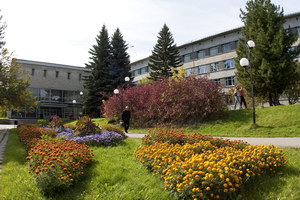Conventional Hydraulic Circuits in an Analysis of Environmental Issues

The paper addresses the problems of conventional circuit modeling in an analysis of anthropogenic pollution of nature. A joint use of two types of models is proposed: 1) a model of conventional hydraulic circuits and 2) a model of extreme intermediate states developed by Melentiev Energy Systems Institute. The first model is used to calculate the distribution of pollutants in the atmosphere and their precipitation. The second model is intended for an analysis of the formation of pollutants and their transformations in branches as a result of chemical reactions and phase transitions. The analysis is based on the propositions of classical equilibrium thermodynamics. The applicability of the thermodynamic equilibrium and extremality principles and one-dimensional circuit models in the study of both reversible and irreversible processes are substantiated. Specific problems are analyzed. These are the determination of the yield of harmful substances in fuel combustion and processing, the distribution of pollutants in the atmosphere of large regions, the impact of hydro and wind power plants on the formation of harmful solutions in the air. The possibility of using a conventional graph (a thermodynamic tree) proposed by A.N. Gorban to analyze fuel technologies is demonstrated. The statement of the problem related to the assessment of the environmental compatibility of integrated energy systems is presented. The admissibility of the representation of the optimal distribution of flows in the integrated system as a sum of optimal distributions in its subsystems that differ from one another in physical-technical and economic nature is explained. © 2018 The Authors, published by EDP Sciences.
Библиографическая ссылка
Kaganovich B.M., Stennikov V.A., Zarodnyuk M.S., Yakshin S.V. Conventional Hydraulic Circuits in an Analysis of Environmental Issues // E3S Web of Conferences. Vol.69. ID: 02003. 2018. DOI: 10.1051/e3sconf/20186902003


